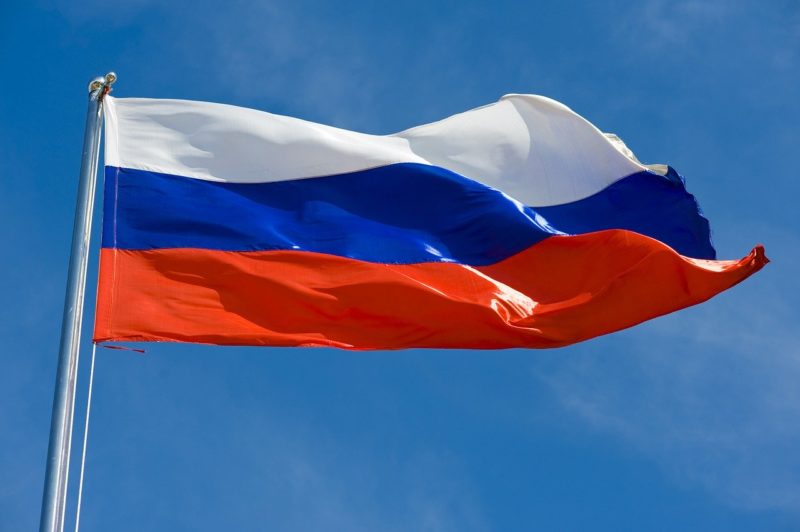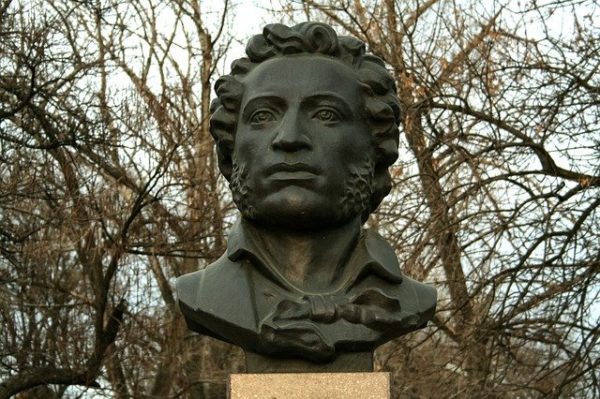Discover the Secrets of the Russian Language
Russian is an awesome language. And not just because it’s so old and widely used. The uniqueness and importance of the Russian language is a topic worth discovering. Read about the history, grammar, and current use of the Russian language. Perhaps this will be your motivation to start learning Russian.
Basic Facts About the Russian Language
Russian is an extremely important and widely spoken language. There are 265 million Russian speakers worldwide, making it the 8th most spoken language in the entire world. It’s also one of the six official languages of the United Nations.
Russian is the official language of Russia, Belarus, Kazakhstan, Kyrgyzstan, and Tajikistan. It’s also official on a regional level in the Ukraine, Georgia, Romania, and Moldova. But, most importantly, Russian is the lingua franca Central Europe, the Caucasus, and Eastern Europe in former Soviet states.
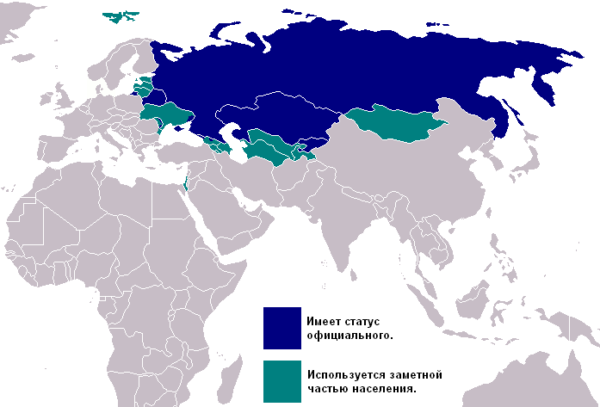
What Language Family Is Russian in?
Russian is a Slavic language, and it’s part of the Indo-European language family. This means that Russian is most closely related to Ukrainian and Belarusian. But, it also bears some resemblance to Polish, Slovak, and Czech. Within the Slavic language family, Russian is the most widely spoken and the most relevant in today’s day and age. With 155 million native Russian speakers, there’s definitely no denying that.
The History of the Russian Language
The ancestor of the Russian language is called Proto-Slavic. Around 500 CE, this common language diverged into three different branches: West-, South-, and East-Slavic. If we follow East-Slavic’s journey, we can discover the history of how the Russian language came to be as it is today.
The Russian Language Through Changes of States
In the 13th century, Mongolian armies overtook East Slavic speaking territories. Up until this point, Russian, Ukrainian, and Belarusian were dialects of the same language. But, these were only spoken languages. In writing, all three followed Old Church Slavonic. This was the written liturgical language of the Orthodox Church.
In the 14th century, the territory became free of Mongol rule. But, it was subsequently divided into two separate states: the Grand Duchy of Lithuania and the Grand Duchy of Moscow. The former had a heavy Polish influence on its language, and it became the ancestor of Ukrainian and Belarusian. This is the point where these two languages part from Russian’s history. The Grand Duchy of Moscow, however, became the ancestor of modern Russian.
At this point in Russian’s history, the language was a diglossia. That means that one community uses two different languages in different situations. Everyday people spoke their Russian dialect, but the writing of the language was in Old Church Slavonic. The battle of these two languages defines the next few centuries of its history. And specific groups or individuals definitely had a preference that tilted the scales.

Byzantine Scholars Preferred Old Church Slavonic
After the Byzantine Empire fell in 1453, scholars moved to Moscow for further studies. There, they found that the Old Church Slavonic liturgical language mixed with Russian dialects. Disapprovingly, they reformed the language to it’s “pure” liturgical form, and they aimed to make dialects of Russian disappear through standardization.
Peter the Great Turned the Tables
During his rule, Peter the Great (1696-1725) wanted to modernize and westernize Russia and its language. To raise literacy rates, he simplified the Russian language again, drawing it closer to the language everyday people spoke.
At that time, the Russian elite had a strong fascination and admiration towards French courts. So, the upper class spoke French in Russian. This meant that a large number of French loanwords entered the Russian language. Peter the Great also wanted to bring specialized modern vocabulary from various European languages into everyday use.
Lomonosov’s Russian Grammar
In 1755, Mikhail Lomonosov published the first Russian grammar book. His goal was to standardize and pen down the most crucial grammatical rules of the language. He divided Russian into two layers:
- high style: the language of Old Church Slavonic lithurgy
- low style: the spoken language of everyday people with dialects
His goal was to find a middle style. This was a blend of the two different styles, and a usable compromise for everyone in Russia. Lomonov’s middle style became the core of modern standard Russian as we know it.
Pushkin: the Father of Modern Russian Language
The famous poet, Alexander Pushkin (1799-1837) is often dubbed as the father of modern Russian. He was to Russian what Shakespeare was to English. He revolutionized the language by normalizing the three styles: high, middle, and low Russian. The spoken vernacularism of the language became legitimate through his writing.
He also brought new vocabulary to Russian. Through his translation work from other European languages, he directly translated phrases and idioms into Russian. So, his work isn’t just artistically beautiful, it’s also linguistically revolutionary.
Changes in the Russian Language in the 20th Century
Through two World Wars and the Cold War, Russia became a world power. The spread of the USSR meant a spread of the Russian language as well. In former Soviet states, through education and administration, Russian became widely spoken. That’s why it’s still a lingua franca in many of these states.
Thank’s to the mass media boom in the second half of the century, standard Russian became more widely spread. This meant the thinning of dialects. While dialects are still relevant in today thanks to the sheer size of Russia, standard Russian is much more commonly spoken than dialectal language.
Russian Alphabet and Writing System
Just like Old Church Slavonic, Russian uses the Cyrillic alphabet. This writing system developed from Greek with Latin influence. While it may seem hard at first, most Russian learners can master the Cyrillic alphabet relatively fast. The Cyrillic script has 33 letters.
А а |
Б б |
В в |
Г г |
Д д |
Е е |
Ё ё |
Ж ж |
З з |
И и |
Й й |
К к |
Л л |
М м |
Н н |
О о |
П п |
Р р |
С с |
Т т |
У у |
Ф ф |
Х х |
Ц ц |
Ч ч |
Ш ш |
Щ щ |
Ъ ъ |
Ы ы |
Ь ь |
Э э |
Ю ю |
Я я |

While some of these look like a coinside with the sound of Latin letters English speakers know, most of these letters are completely new. Here’s how you pronounce them with a rough transliteration of the Cyrillic letter.
Russian Letter |
Common Transliteration |
How You Pronounce It |
Аа |
a |
father |
Бб |
b |
bat |
Вв |
v |
vine |
Гг |
g |
get |
Дд |
d |
doctor |
Ее |
e, ye |
yes |
Ёё |
yo, jo, ë |
your |
Жж |
zh, ž |
like vision |
Зз |
z |
zoo |
Ии |
i |
leave |
Йй |
y, i, j |
boy |
Кк |
k |
keep |
Лл |
l |
love |
Мм |
m |
move |
Нн |
n |
night |
Оо |
o |
more |
Пп |
p |
pack |
Рр |
r |
rolled r |
Сс |
s |
see |
Тт |
t |
taste |
Уу |
u |
book |
Фф |
f |
feel |
Хх |
kh, h, x |
loch |
Цц |
ts, c |
tsunami |
Чч |
ch, č |
chimpanzee |
Шш |
sh, š |
similar to “sh” in sharp |
Щщ |
shch, sch, šč |
similar to “sh” in sheer |
Ъъ |
ʺ – hard sign |
silent, prevents palatalization of the preceding consonant |
Ыы |
y |
bit |
Ьь |
‘ – soft sign |
silent, palatalizes the preceding consonant (if phonologically possible) |
Ээ |
e, è |
let |
Юю |
yu, ju |
unite |
Яя |
ya, ja |
yard |
How to Pronounce Russian Words
Now that you know how to pronounce the letters of the Cyrillic alphabet, let’s take a look at how the phonology of the Russian language works.
Pronouncing Consonants in Russian
There are 21 consonants in the Russian language. 15 of these have two different pronunciations:
- hard consonants aren’t pallatized
- soft consonants are pallatized, as if they were followed by a y
The softness or hardness of a consonant depends what letter comes after it. Hard indicating vowels make the consonant in front of them hard, while soft indicating vowels do the opposite. Additionally, the letter Ъ definitely makes the consonant hard, and the letter Ь makes it soft if possible. The 15 consonants that can be hard or soft are:
| Б | В | Г | Д | З | K | Л | M | H | П | Р | С | T | Ф | X |
Voiced and Voiceless Consonants in Russian
Some Russian consonants come in pairs. One part of the pair is a voiced consonant, while the other isn’t. This means that your vocal cords vibrate with one but not the other. This isn’t such a foreign concept to English speakers. The letters b and p are just like this. In Russian, the voiced and voiceless consonant pairs are:
Voiced |
Voiceless |
б |
п |
в |
ф |
г |
к (rarely х) |
д |
т |
ж |
ш |
з |
с |
The Russian language has a special rule for pronouncing voiced and voiceless consonant pairs. If the voiced consonant is at the end of the word, it’s pronounced as its voiceless consonant pair. For example:
- год actually sounds like гот (year)
- бог actually sounds like бох (god)
- глаз actually sounds like глас (eye)
Additionally, voiced consonants become voiceless if there’s a voiceless consonant behind them. And vice versa. Voiceless consonants can become voiced if the next letter is also voiced. Here are an example:
- подпись actually sounds like потпись = signature
Vowel in the Russian Language
The 6 basic vowel sounds in Russian are represented by 10 letters. The stressing of the vowels is important in this language. You need to pay attention to the intonation you use depending on what other letters surround the vowels. Unstressed vowels are often reduced. This is why Russian isn’t a phonetic language.
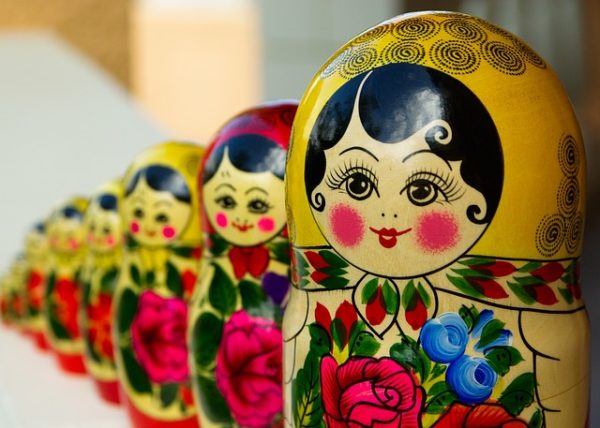
The Grammar of the Russian Language
A lot of learners are afraid to start learning Russian because they think Russian grammar is impossibly hard to learn. But, that’s just not true. Russian grammar is just as managable and necessary as with any other language.
The most important thing that learners have to understand is that Russian is a fusional language. This means that suffixes and prefixes are attached to roots of words to change the grammar or meaning.
Russian Nouns
Russian nouns have 6 cases. These cases show what role the noun fulfils in the sentence. And all six cases have different suffixes that get added to the root of the noun to show this case. How these case endings reveal themselves depends on the qualities of the noun. The six cases of the Russian language are:
1. Nominative: when the noun is the subject
- Брат ест. – The brother eats.
2. Genitive: when the noun is possessive
- Это яблоко брата. – That’s the brother’s apple.
3. Accusative: when the noun is the direct object
- Яблоко упало на моего брата – The apple fell on my brother.
4. Dative: when the noun is the indirect object
- Я дал брату яблоко. – I gave my brother an apple.
5. Instrumental: when the noun is the instrument or means of the action
- Я живу со своим братом. – I live with my brother.
6. Prepositional: when the noun shows where the action takes place (location)
- Яблоко у моего брата. – The apple is in my brother.
Cognates in Russian Vocabulary
One thing that will definitely make learning Russian easier is that there are a lot of cognates between English and Russian. These words sound similar and have the same meaning. So, you’ll have an advantage when you learn them. Of course, they don’t look similar right away thanks to the different scripts the two languages use. But, they do sound similar. Some common cognates between English and Russian are:
English |
Russian |
sister |
сестра |
colleague |
коллега |
milk |
молоко |
water |
вода |
The similarities between these words can be traced back to two particular language evolution facts. Since both English and Russian are part of the Indo-European language family, some words evolved from the same origin. Otherwise, a lot of Russian comes from French, just like English. So, the common French root can often be recognized. Otherwise, Russian also shares loanwords and cognates with other European languages. This definitely makes learning Russian easier.

Does Russian Have Genders?
Yes, the Russian language has three genders: masculine, feminine, and neuter. Although the concept of genders is new to native English speakers, most Indo-European languages have them. For Russian, differentiating the genders of the nouns is fairly easy. You have to look at the word endings. The last letter of the noun often lets you know what gender it is.
- feminine nouns usually end in –г or -a
- neuter nouns usually end in -o or -e
- most other endings are usually masculine
Some nouns end with the letter –ь. Those are either masculine or feminine, but there’s no rule to differentiate between those two.
Adjectives in Russian
In Russian, adjectives need to match the qualities of the noun their attached to. The suffixes attached to the adjectives need to reflect the gender, number, and case of the noun. Since there are three genders, two numbers, and six cases, there are 24 different word endings adjectives can have in Russian.
To make matters a little bit worse, these inflections are unique to adjectives. So, even though you need to learn a bunch of case endings for Russian nouns, you need to learn a whole new set for the adjectives attached to them.
Verbs in the Russian Language
Unlike English, Russian verbs need to be conjugated based on different factors. First is the tense. Luckily, Russian verbs only have three tenses: past, present, and future. This makes Russian verb conjugation much more simple. But, you also need to look at the aspect of the verb.
The aspect of a Russian verbs is a new concept for English speakers. There are two aspects a verb can have in Russian:
- perfective: the action has been completed once
- imperfective: the action is in progress, or it’s ongoing and will be completed many times.
So, depending on how completed a verb is, Russian makes a big difference. The aspect isn’t a conjugation difference. There are actually two different verb stems you need to use depending on whether the verb is perfective or imperfective. Here are some examples to explain this better.
The imperfective form of “to read” is читать and the perfective is прочитать. As you can see, these are two different stems. And when you conjugate it in future tense, it signals a different meaning.
- я прочитаю. – I will read. (I will be continuously reading without an end)
- Я буду читать. – I will read. (I will read it once)
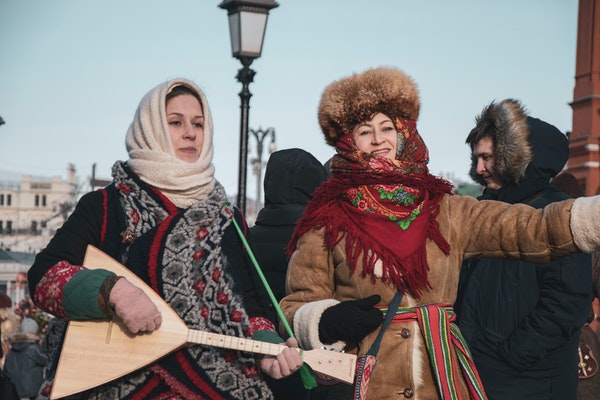
Russian Word Order
The basic sentence structure in Russian phrases is SVO (subject-verb-object). That’s the same as English.
- Ольга ест яблоко. – Olga eats an apple.
But, because of the case system, the word order in the Russian language is much more flexible. This means that if you mix the words in the sentence, the meaning will (most likely) remain the same. And it would be grammatically correct. But, most of the time, there’s only one word order that everyday Russians use. It’s best to stick to the common sentence structure, even if the word order has flexible possibilities.
Russian Articles
Just like most Slavic languages, Russian doesn’t have articles. That’s one Russian lesson you can skip.
Is Russian Hard to Learn?
The United States Foreign Service Institute (FSI) lists Russian as a Category 4 language. This means that English native speakers would have a harder time learning Russian compared to French or Spanish for example. But, it’s also much easier than learning Chinese or Japanese would be.
Ultimately, Russian isn’t hard to learn. But, you have to be prepared to study unfamiliar grammatical concepts. If anything, this makes Russian more interesting, but definitely not hard.
Although at first look the Cyrillic alphabet seems like the most challenging part of learning Russian. But, it’s actually very straightforward. Learning all the cases, inflections, and matching them to gender and number is something most learners need to get used to. But, once you tackle that, you’re golden. Your Russian fluency will be handed to you on a silver platter.
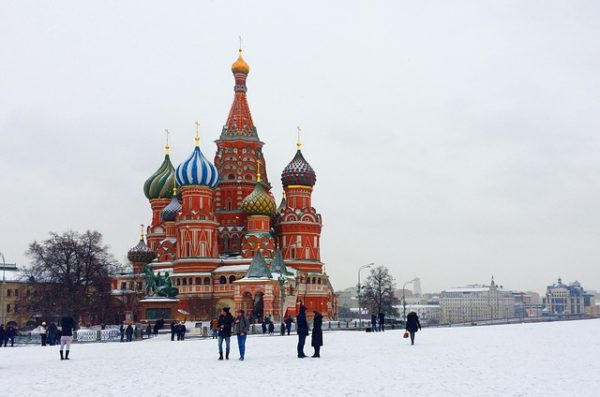
How Long Does It Take to Learn Russian?
Of course, there’s no exact number for how long it takes to learn the language. But, since Russian is a category 4 language, the FSI assigned 1100 hours to its completion. This means that a native English speaker would need 1100 hours to go from zero knowledge to complete Russian fluency on average. But, this is just a rough guideline.
A government agency doesn’t know you. They don’t know how motivated you are. And they for sure don’t know what language learning method you use. If you learn Russian with the best language learning program, you can easily shave time off of that estimate.
Learn Russian with the Best App
To reach Russian fluency, you need a reliable language learning method. You need one that teaches you the most common Russian words and phrases. And most importantly you need one that teaches you how to speak Russian. Luckily, that’s exactly what OptiLingo offers.
OptiLingo is an app that gives you Russian fluency faster. It identified a tight list of Russian vocabulary that real Russian locals use. You learn nothing more, and nothing less. The essentials that help you navigate in Russia successfully. Make your Russian dreams a reality faster by downloading OptiLingo!

